9 minute read
Which is the “best hive”?
That’s a bit of a daft question, as if a hive is for sale, it must be the best for someone. However, as a first criterion, I think poly hives should have protected walls. Consider the effect of insulated hive walls.
The weakest link regarding how long a poly hive will last is probably the rims of the boxes. A hive can be strong in all other respects, but let down by this feature. Microplastics are a growing concern. They have been found in honey.
Options
Omlet - no longer being produced
Abelo / Lyson
BS Honey — out of production (2023)
Poly hives with no protection: Paynes, Maisemore, etc.
The Omlet beehaus
Bright and beautiful yellow or orange
Out of production
The old version was compatible with wooden hives, but had a problem with water wicking between the boxes.
Abelo's premium version has a lip, somewhat like a Paradise hive. This feature means it is not backwards compatible. The lip is about 10 mm across and well-covered with rugged plastic protection. But it is not a gradual slope like with a Beebox. Indeed, one user on a forum commented that you cannot push your hive tool through the wall width to crack boxes open. However, this is less of an issue since it is top space, and there are indents in the corners for the hive tool to crack open the boxes. Boxes fit together with a positive join. Care is required with Paradise to ensure boxes are completely clicked together. Abelo is well-thought-out, and apart from being significantly heavier than Paradise hives, it has all the features anyone would want.
The plugs on each wall can increase ventilation or provide convenient access to the supers. The internal rapid feeder is small — it only holds 2 litres, but an Ashforth is available. The entrance has several settings.
What is worrying is that the premium hives include the option of top ventilation. Perhaps it panders to people who regard this as necessary. So, do some homework before purchasing this hive (in fact, any hive!). The pictures below show the old version. Beekeepers in your Association will LOVE to show you their hives.
Lyson sells a vast amount of stuff, including a hive weighing machine and barrows for moving hives.
The Lyson catalogue 2024 - so link may be out of date.

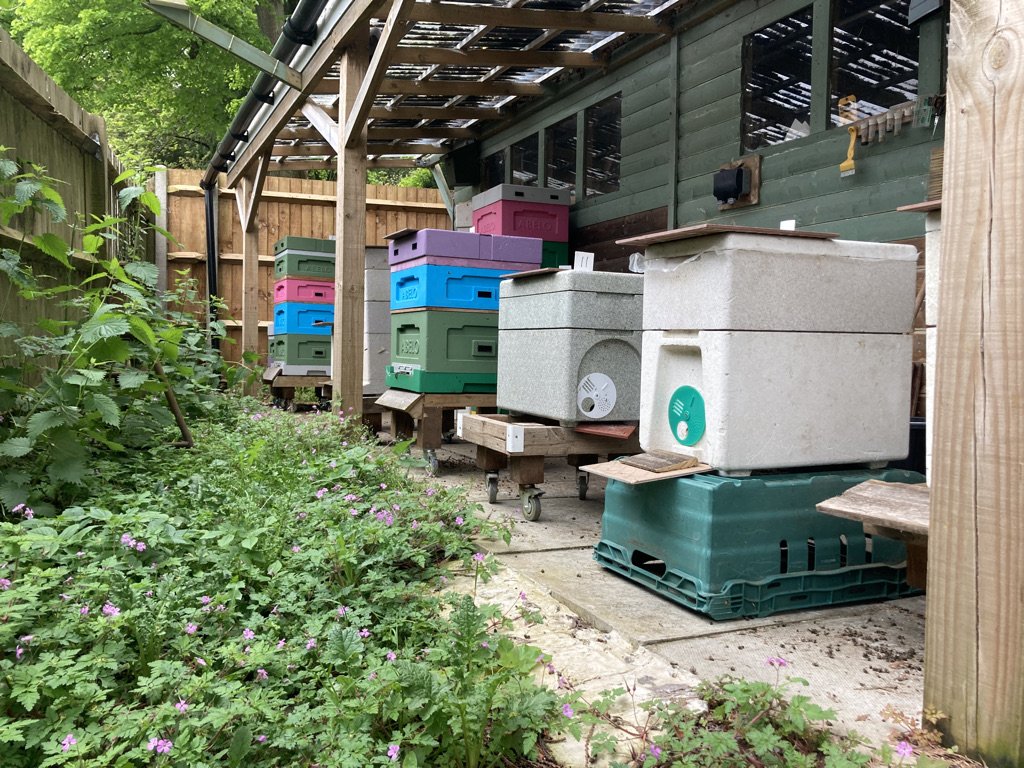
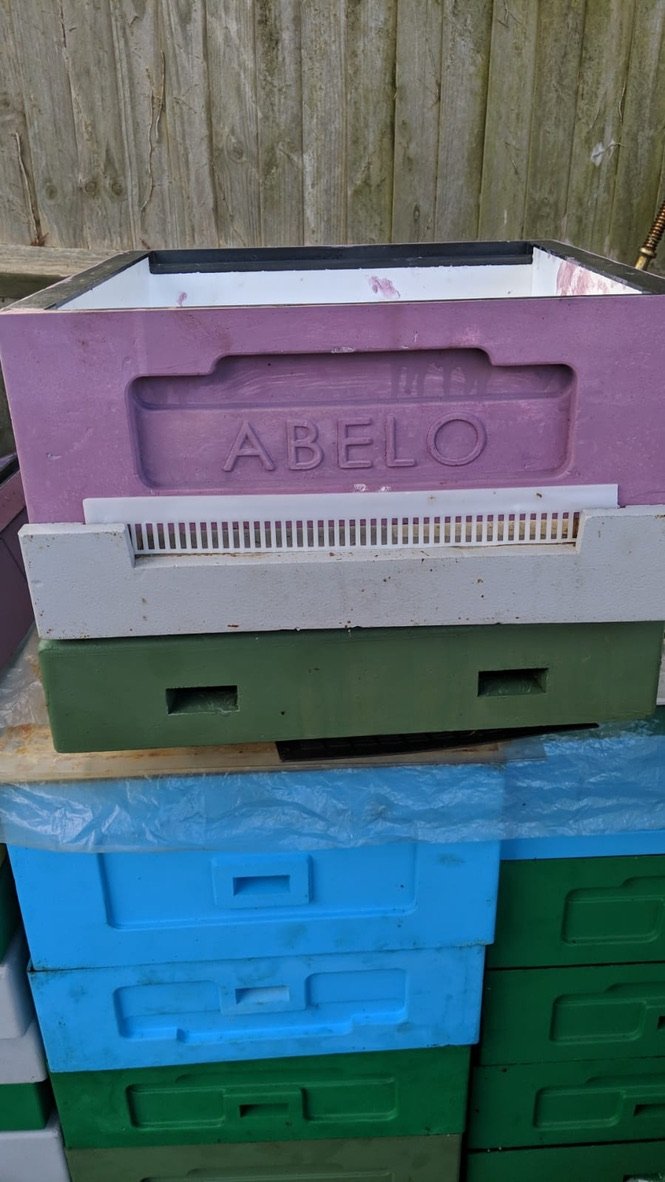
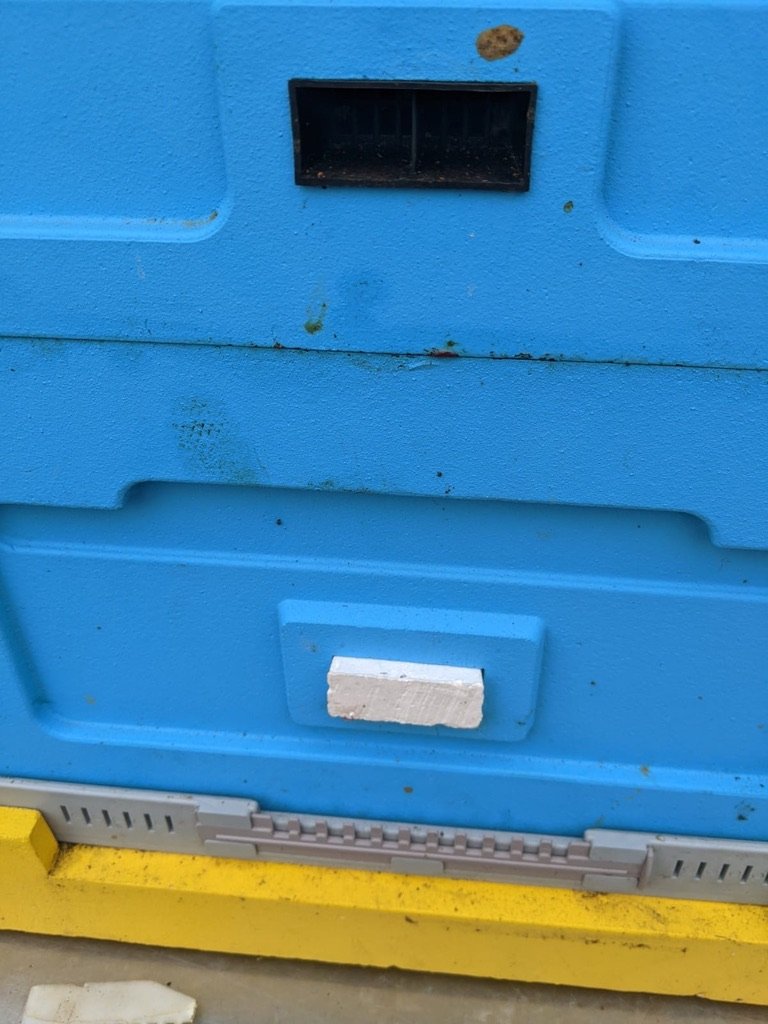
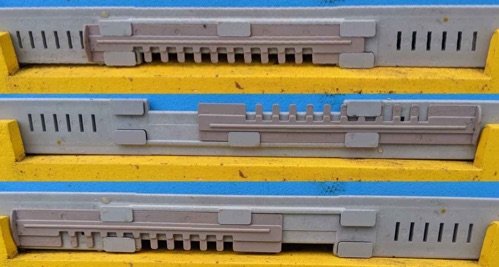
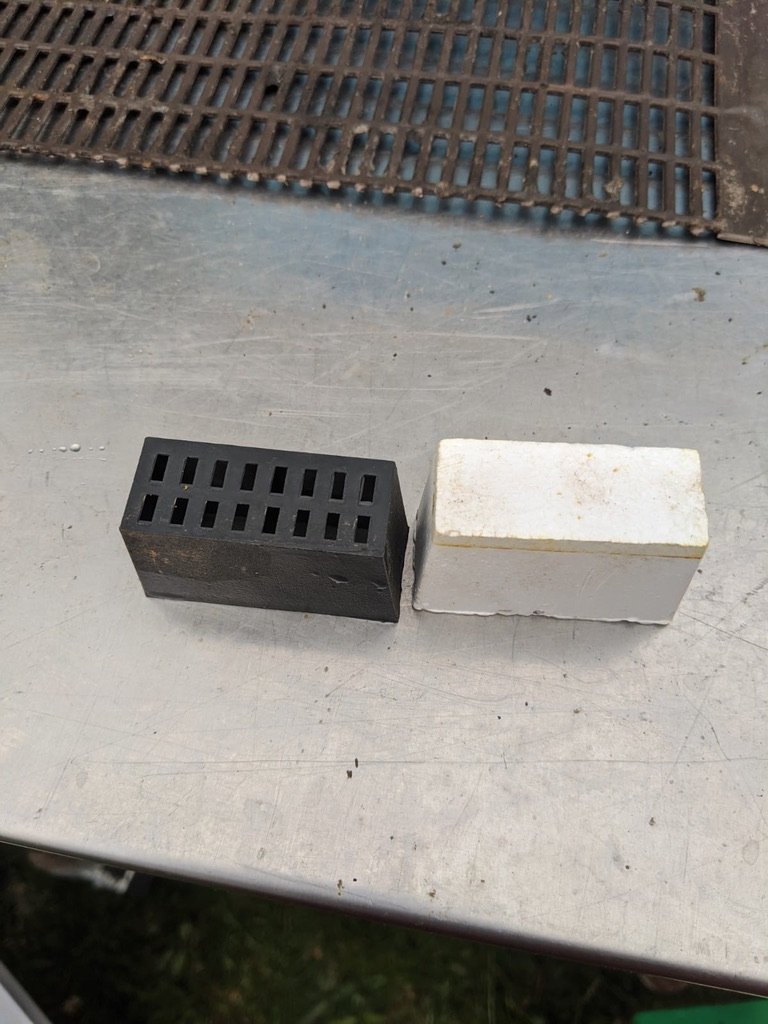
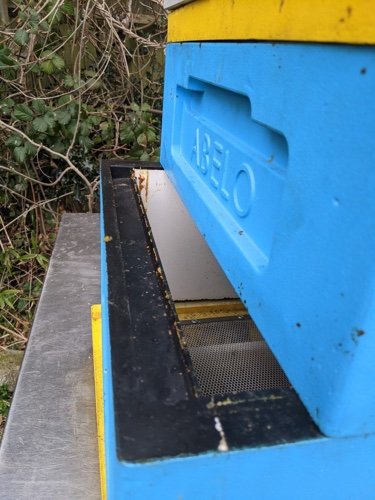

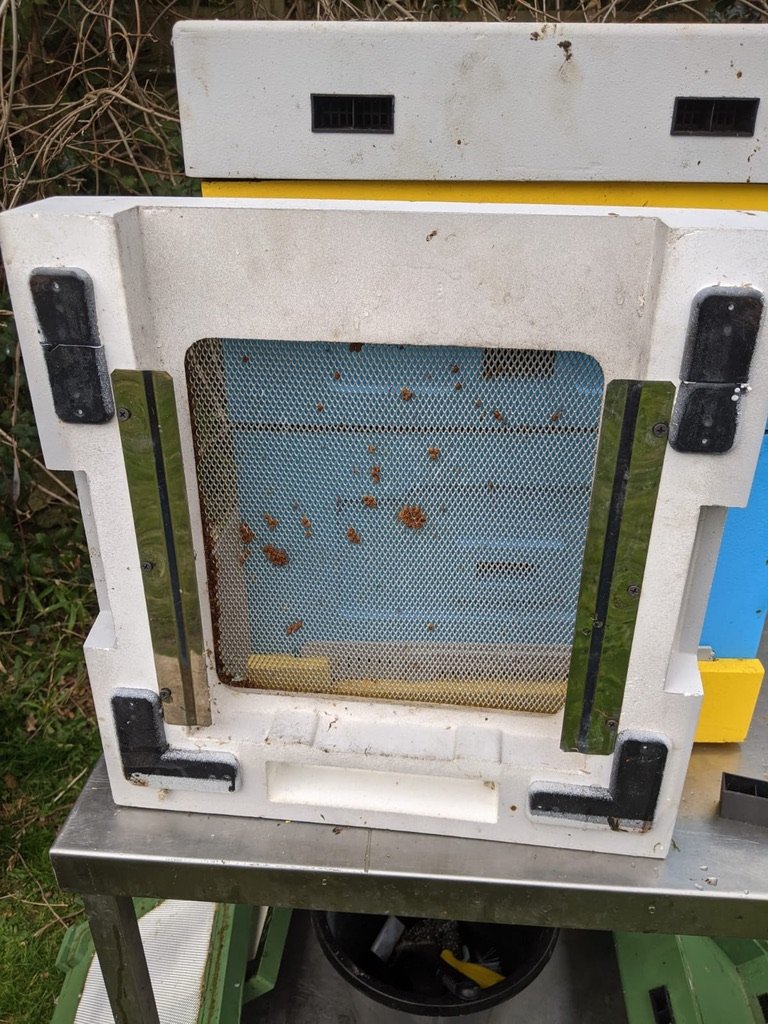
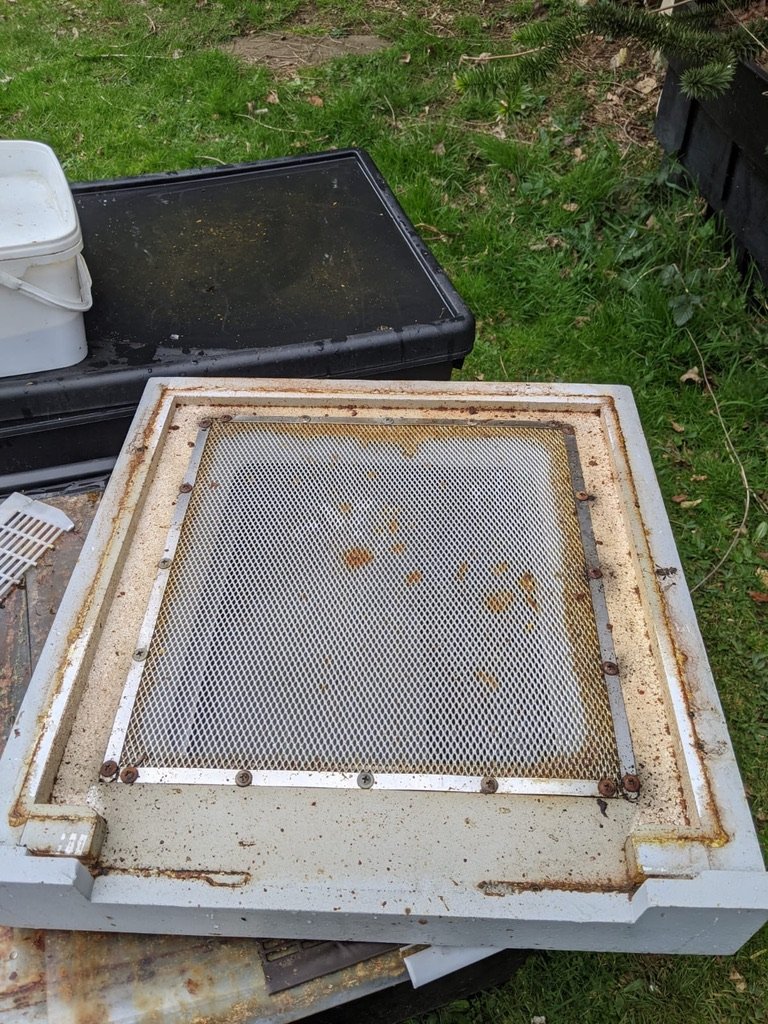
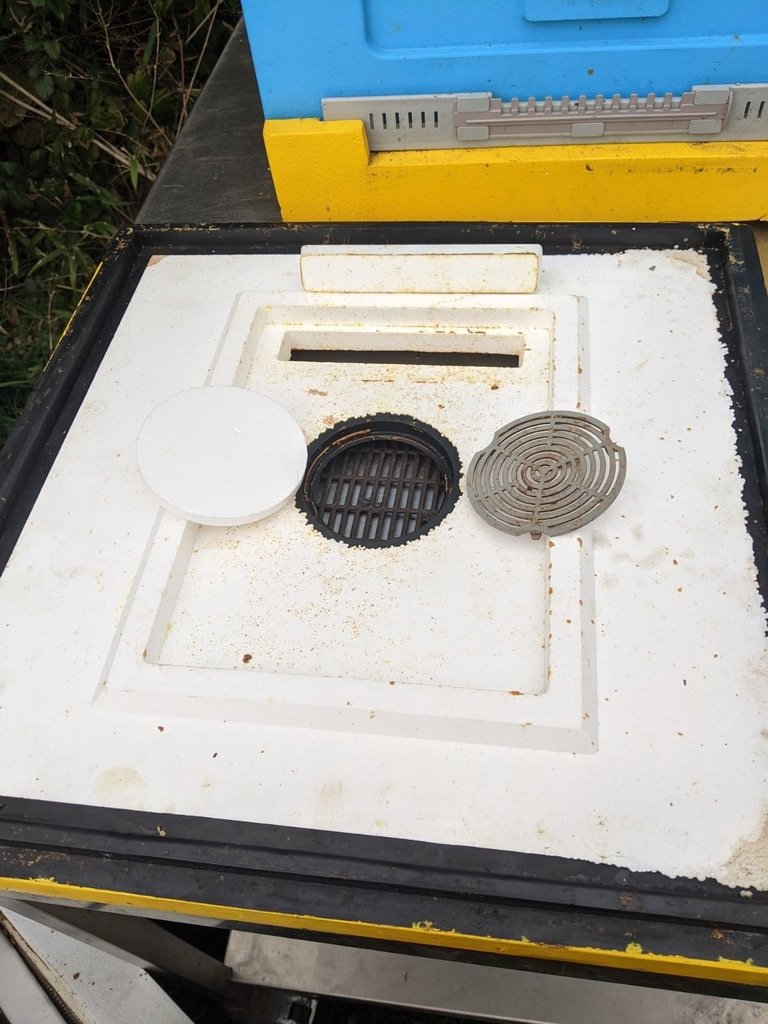
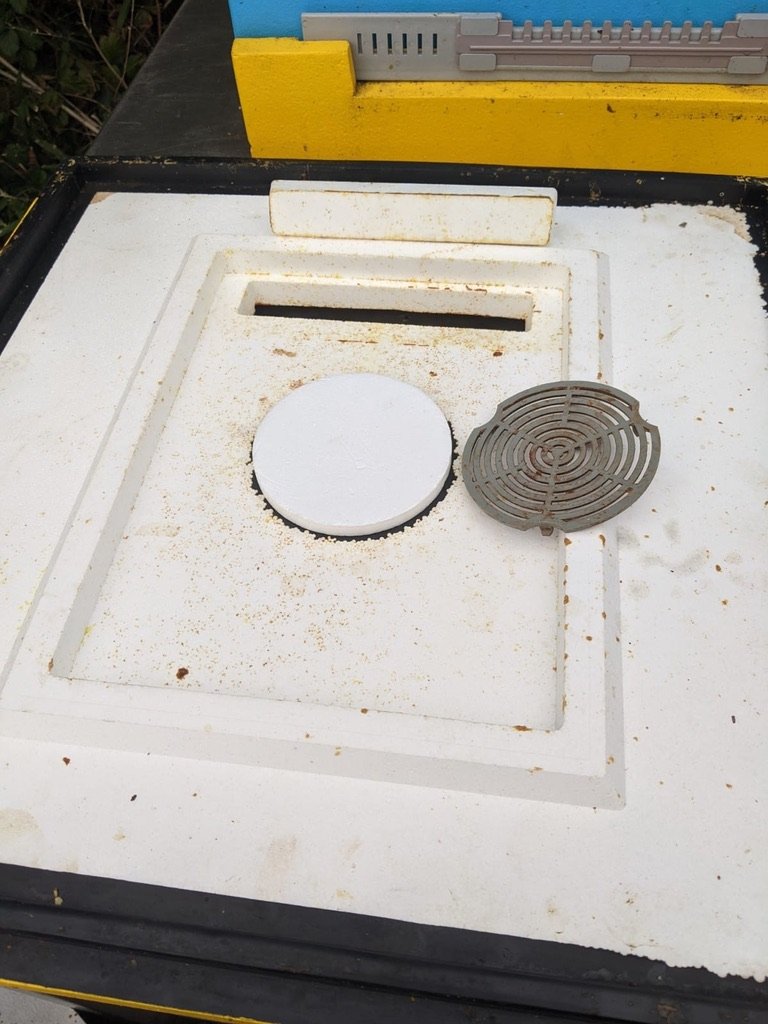
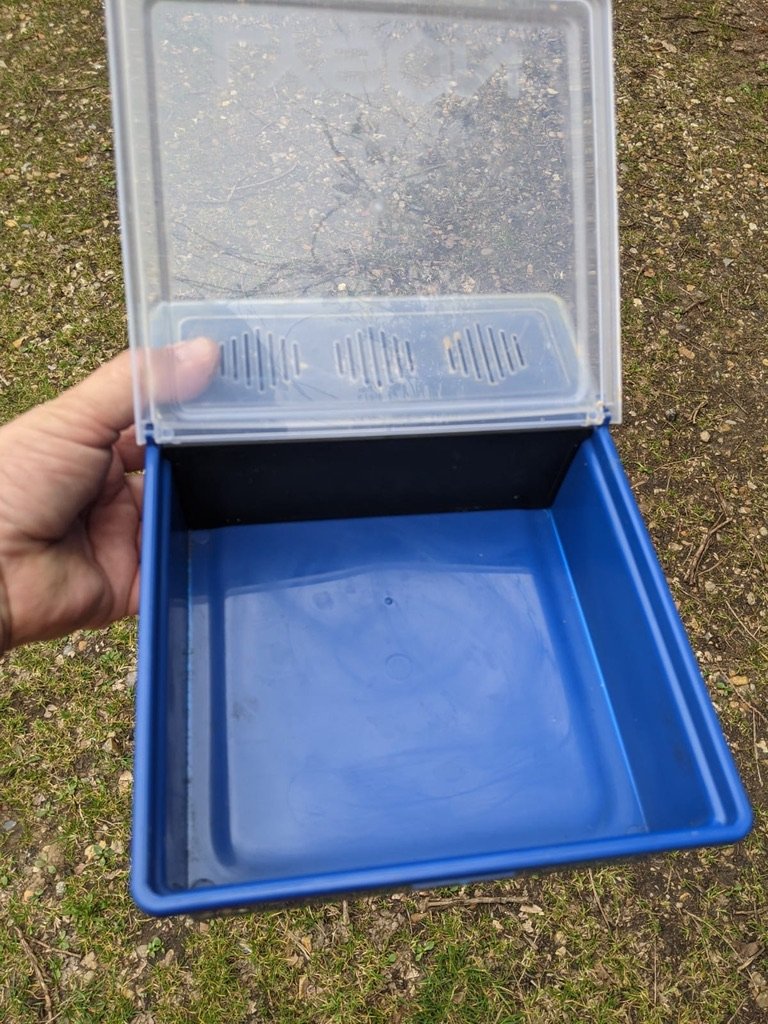
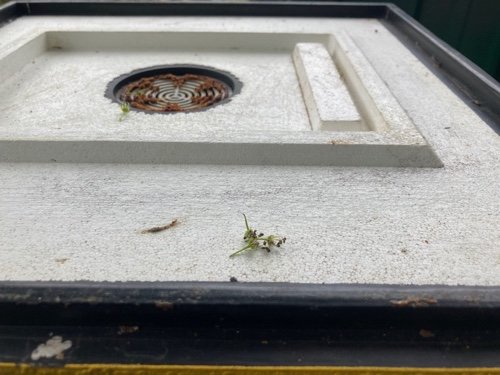
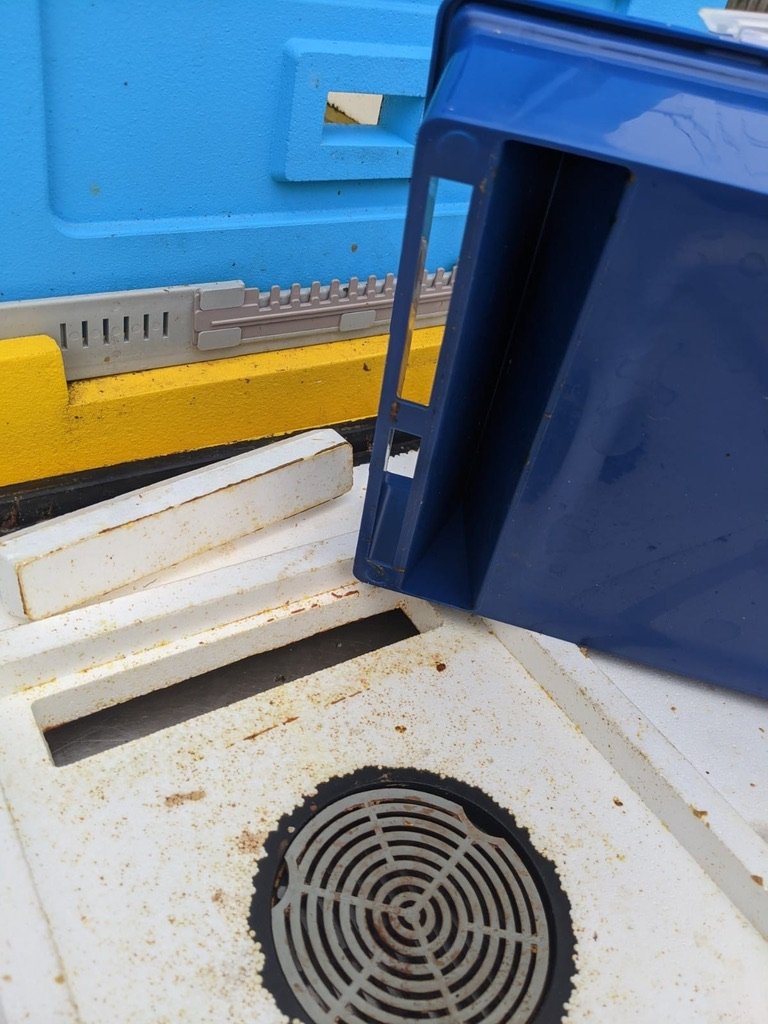


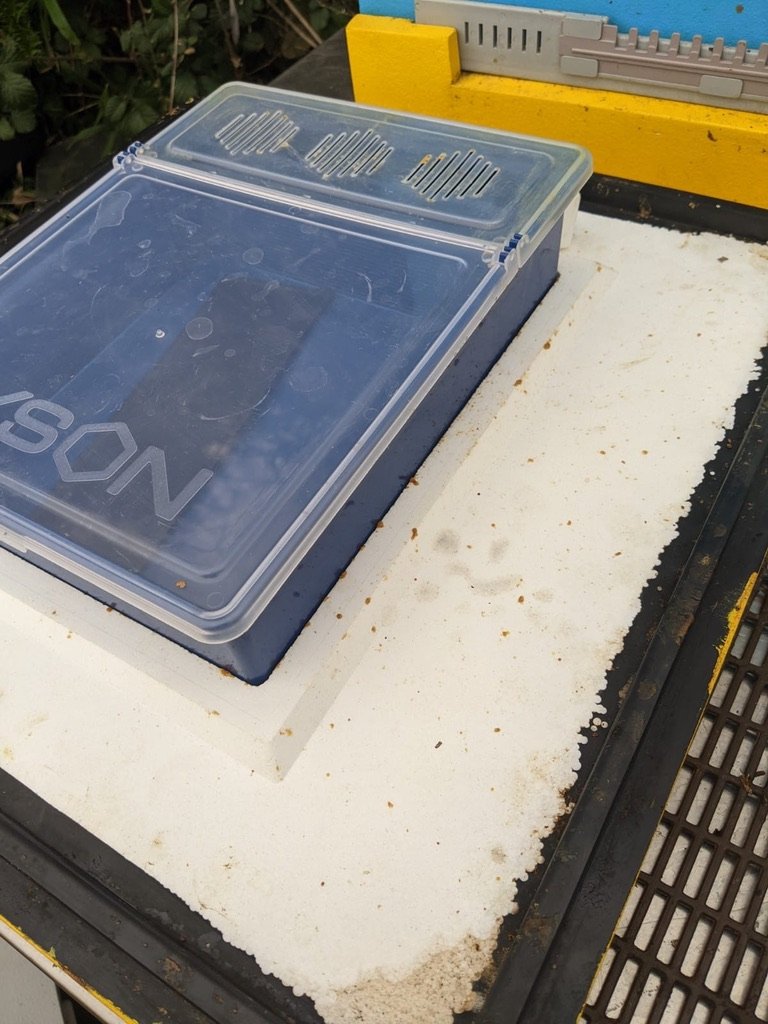
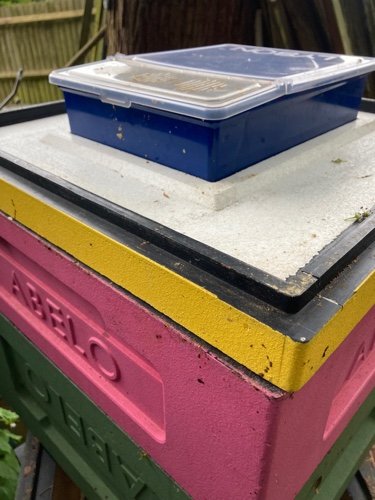

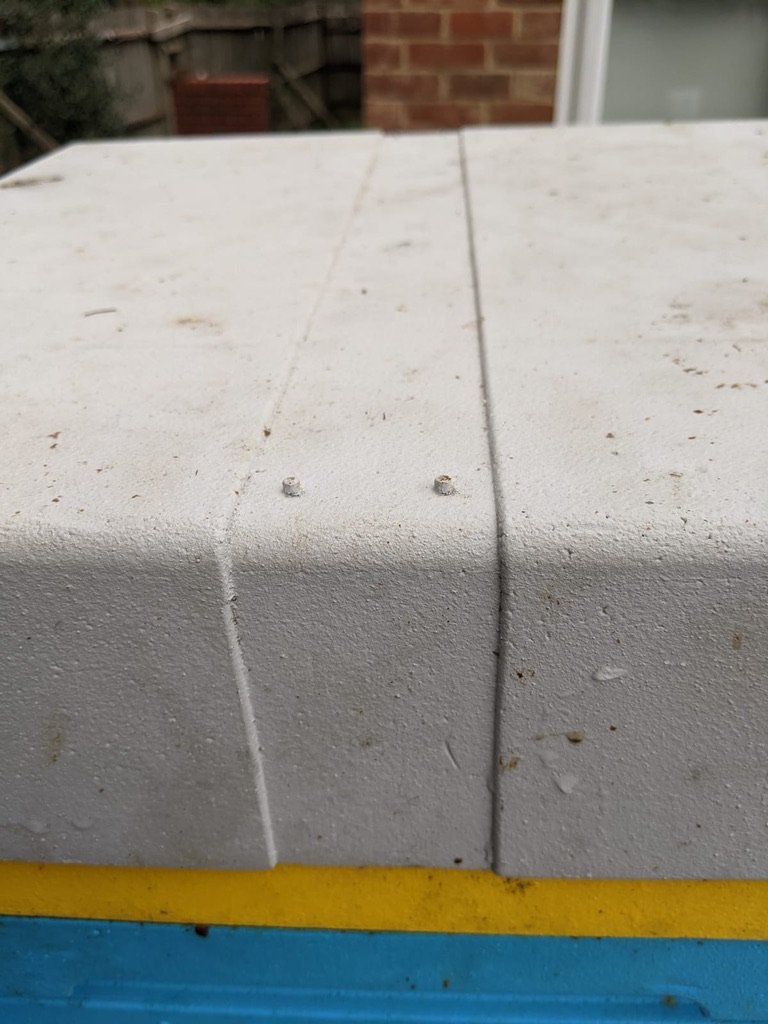
Paradise Honey Beeboxes
It comes as National deep and supers, Langstroth supers, mediums, and deeps. They are compatible with wooden hives in the short term. Read all about it.
National Bee Supplies
They only made a National poly hives. The hive looks was well constructed withs every necessary feature except deep handholds and a Rapid feeder. A feeder from another hive type should work.
Paynes
Poly hives without wall protection
I’ve only seen Paynes in action.
No hive comes with helpful verbiage, except Beeboxes and National Bee hive supplies (which was closing in 2023 but is under new management).
Simon the Beekeeper took over Paynes hives in 2024
Wooden boxes can be put on top of the Paynes boxes with a low risk of water ingress, making the hive popular. Their nuc is even more popular where I live.
The slope on the outer part of the Paynes walls means that rainwater runs off. In terms of build strength, you could contrast Paynes with Paradise hives in terms of the average physique of a man compared with that of an average woman. Paynes feels more robust, but this makes it heavier. Both are up to the job.
The perspex for the Paynes rapid feeder is at least twice as thick, and the varroa board is three times thicker than those for a Beebox.
I can press my fingernail into the polystyrene of a Paynes and make the same impression as in a Beebox hive. Payne’s devotees say damage is not a problem, but if the boxes are heavy and well-stuck together, the edges of the walls will be damaged eventually. Then, the bees will chew them.
With Paynes, the parts are extruded as one, so no assembly is necessary. In the past, they were sold as not needing painting because of inbuilt UV light protraction. Now, Paynes recommend a lick of paint.
The hives have raised metal runners for the frames.
An excellent landing board may get in the way when you move the hive, but you could always saw it off. Just like Beeboxes, they are cold way and bottom space.
Payne’s nuc is popular where I live despite the well for sugar syrup that must be impossible to clean when bees are in the hive. Happily, they now produce one without the feeding slot. The nuc can be extended upwards with a further body.
A hot Gasvap spout can rest on the polystyrene for the duration of an OA sublimation without causing damage.
The hives come in National and Commercial sizes. The boxes are light and have some excellent features such as ekes. The Nucs use one eke, and they house National Deeps, two ekes, and they accommodate 14 × 12 frames. When it comes to opening the hive, boxes have a deep lip, so a hive tool cannot penetrate the entire wall thickness. Each section is moulded as one. The Miller-style feeder looks good. Note the absence of handholds compared to Beeboxes, but recesses at the top edge of each box make it easy to lift the box at their top. The varroa mesh looks challenging to clean and is pinned in position.
Maismore Nucs in the foreground
Rear ends
Six frame nuc
Other poly hives
This is manufactured in Denmark and evidently hits the jackpot regarding compatibility with wooden hives. See what David Evans has to say. It’s density is 100 kg/m3.
Not in common usage in my part of Surrey
Thermo Hive and Technoset
Which is the “best” poly hive for you?
The best for you will depend on your priorities: top or bottom space, compatibility with wooden hives, wall edge protection, need for ventilation, and strength (e.g. moulded as one). Your “best” will inevitably be a compromise. When I bought my hives ten years ago, poly hives were mostly Langstroth. Paradise hives were my best option, and maybe they still are.
Choosing a hive type is essential, like choosing a partner, as you are stuck with them for life.
Perhaps a wooden hive would suit you better?
British Standard Hives is the joint name for Modern National and WBC. Note how the roof is inadequate. It provides no defence against dampness. If the roof was completely covered with metal, the hive could be at risk of overheating. Wooden hives are worse than poly hives at providing the ambience provided by a tree cavity. Bees are stressed during the winter, so that 10% losses are accepted as normal (losses are rare with poly hives). If you aren't concerned about deforestation, cedar is the longest lasting and heaviest material. Cedar hives have a resale value.
Other hive types - Sevenoaks BKA
Cedar wood hives © Crown copyright
The wooden National is easily the most common hive in England. The main problems with wooden hives are weight and dampness (since bees can survive without insulation). Hives made from cedar can be left unpainted and last several decades, although, after many years, they develop cracks that need filling. Those made of plywood/pine wood may be light but require careful wood treatment (masonry paint affords inadequate protection). Quality wooden hives have a second-hand value. They are easy to clean. Hive parts not in use are best stored under cover to reduce deterioration. Bees will find it taxing to cope with increasingly hot weather, particularly when Asian hornets attack. It is great to share the same as most beekeepers. The advice of experienced beekeepers will always be relevant. A comparison of wooden hives with poly hives.
Upright wooden hives resemble the way BeeBoxes function, with removable frames, QE, OMF, a crown board etc.
National hive
Top bar hives
Some resemble the feeding trough used for baby Jesus. Basic ones are perfectly effective and straightforward to make and use. So long as the hive is level, the bees build straight comb in the right place. Options for manipulations are limited. Top bar hives have limited options for manipulations,
Beekeeping involves a lot of bending
They overcome the problem of heavy lifting and bending. The hives are heavy and not designed to be moved. No frames are used – just top-bars. Honey is harvested by crushing comb, which results in smaller harvests than reusable frames and foundation. Anecdotes suggest that varroa are less prolific in these hives.
Flow style hives
The promotional material suggests that all you need to do to get honey is turn a tap. It is expensive. The reality is not so simple as bees are not naturally primed to put honey in plastic tubes, so I anticipate that acceptance could be a problem. These hives are only suitable for low glucose honey or they will seize up. I’ve heard that they are becoming popular in California. Maybe they’d be good in England during a strong honey flow. See: Black Mountain Honey review Learn more
Natural Hives
I have divided natural hives into two types
Bee Centric / Sustainable
Harmony
The objectives of Natural and conventional beekeeping are quite different. Natural is about looking after bees as they live in the wild - an excellent objective. Conventional beekeeping is a system for producing honey and other bee products - a needs-must approach. For example, a traditional beekeeper may boast of a large honey crop and consider a natural beekeeper, as described by the Natural Beekeepers Trust, a failure because they produced none. A Natural beekeeper would regard a conventional beekeeper as a failure if they needed to treat varroa. The approaches are as different as keeping a pig as a pet compared with rearing one for pork.
Bee Centric Sustainable beekeeping
Honeybees are left to be themselves in long, thin cavities with thick, rough walls and a fixed volume of 40 - 55 litres, placed 3–4 meters off the ground with at least 300 meters between hives, not in cramped apiaries. Some of these hives are built on stilts with a thatched roof. Bees take up residence as swarms. Hives are not inspected, and no honey is harvested. The Sun hive has a different design, but a similar rationale. It resembles a woven basket in the shape of a football.
Lack of interference results in stress-free resilient bees that can shrug off health problems, largely deal with varroa, and suppress infections like EFB. But they will pass the infection to other colonies, which, when affected, must be destroyed. If the focus of infection remains, the beekeeper’s new stock will be re-infected. AFB is an even more severe concern than EFB. If a colony living in a log-style hive dies and this goes unnoticed, it will be robbed, and a foulbrood infection could spread around the area. AFB has been a huge issue, but outbreaks are uncommon now thanks to disease surveillance by conventional beekeepers.
In an urban environment, uncontrolled swarming is a public nuisance.
Bee Centric beekeeping raises the issue of whether it is moral to farm wild creatures. Almost all our foods were originally wild and are bred according to our purposes; it is just that we have not bred bees to the same extent. “Native” bees, both farmed and wild, are derived from imported stock introduced after the Isle of Wight disease decimated English bees 1907 - 1920. They are not native. The true native British Black bee is only found in remote areas. Natural beekeepers consider honeybees wild rather than domesticated and should mate as they wish and so can undo breeding programmes..
Harmony hives
Harmony is my description of natural hives that are more like upright hives than Sustainable hives.
Diseases are reduced by keeping bees in hives that externally resemble standard vertical hives and internally resemble the inside of wild bee nests. The hives enable bees to draw wild comb hence, the combs are attached to the sides of the boxes, which reduces drafts.
The Warre is a typical design. Above the chambers is a quilt that retains straw or sawdust; above this is a ventilated space. The hive footprint is small, e.g. 30 × 30 cm. The bees build wild-style comb on 24 mm wide wooden starter slips. The width of the wooden slips traps warm air. New boxes are added underneath (nadired). The hive dynamics are such that the cluster travels downwards as brood cells are filled with stores. Inspections are spurned as they stress the bees and reduce hive warmth. Apart from supering, the bees are left alone until harvest.
I think the Warre’s design is somewhat flawed because of top ventilation and thin walls (20 mm). If the bees were truly in a hive conducive to their lifestyle, they would produce more honey. If a bee tree has an internal space greater than 40 litres, the bees would fill it with stores. Giving them more space to expand could delay swarming, but probably not by much. There is a good amount of literature about using the hives, but I can find no scientific evidence to support the benefit of the hive. However, a plus is that Warre hives are easier to construct than standard hives.
The disadvantages of such hives are the lack of disease surveillance and lower honey production compared with a standard hive because they have to build wax, and swarming is not controlled.
Feeding sugar is an example of divergent views. Natural beekeepers believe that bees overwinter better with honey than sugar stores. The reality is more complicated, as David Cushman explains. My experience is that the effect can’t be significant, as I have fed 52 colonies sugar and overwintered them and only lost one hive through my bungling.
If you decide to be a laissez-faire natural beekeeper, you will join an elite group. The majority of beekeepers, consider natural beekeeping as a liability, since the colonies are not checked for diseases like foulbroods.
Final point: Bee colonies in any hive should be registered with the BBKA, so the owner can be informed of an outbreak of Foulbrood. Check whether your Association provides its members with Bee Disease Insurance.





















